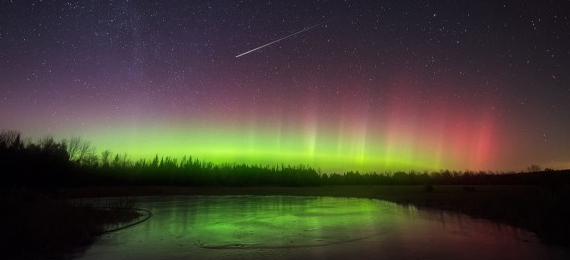
Northern lights from space are also referred to as polar lights or aurora borealis, a natural phenomenon of dazzling light display in the sky, widely seen in high latitude regions like the Arctic and Antarctic. The term aurora borealis was named by the astronomer Galileo Galilei in the year 1616. It was named after the Roman goddess Aurora and the Greek name for the north’s wind, Boreas.
How Do Northern Lights Happen?
The temperature is around 27 million degrees Fahrenheit (15 million degrees Celsius). The sun boils and bubbles due to the temperature on its surface rises and falls. Particles shake the star from the sunspot regions on the surface. Hurtling particles of plasma are referred to as solar wind in space. It takes these winds around 40 hours to succeed on Earth. Once they do, they will cause dramatic displays called the northern lights.
The colors associated with northern lights are pink, green, yellow, blue, violet, intense orange, white, and red. Our atmosphere consists of different chemicals like nitrogen, oxygen, argon, and carbon dioxide. Research tells us that the colors in the northern lights are formed due to the collision of different gases in the earth’s atmosphere.
What Is the Scientific Name for the Northern Lights?
- A. Polar Lights
- B. Aurora Borealis
- C. Aurorae Polaris
- D. None of the Above
The yellow and green color is produced when the particles collide with oxygen and when nitrogen interacts, red-violet and blue colors are produced. In Aurora borealis, green color is widely recognized, which is why the human eye quickly detects green color than the other colors. Sometimes you will be able to see a hint of pink, violet, and white color. and a strong vision of red at times.
The colors were also affected by altitude and collision types that change the colors that appear in the northern lights. The green color typically seems up to 241km high(150 miles), the red color above 150 miles, and the blue, violet, and purple also usually appear at 96.5 km(60 miles). These colors manifest the static band of light.
Alaska and Northern Canada are the best places to catch the sight of northern lights, and it is recognized as one of the must-visit romantic destinations. Even from Norway, Finland, and Sweden, you will be able to see the excellent vantage points.